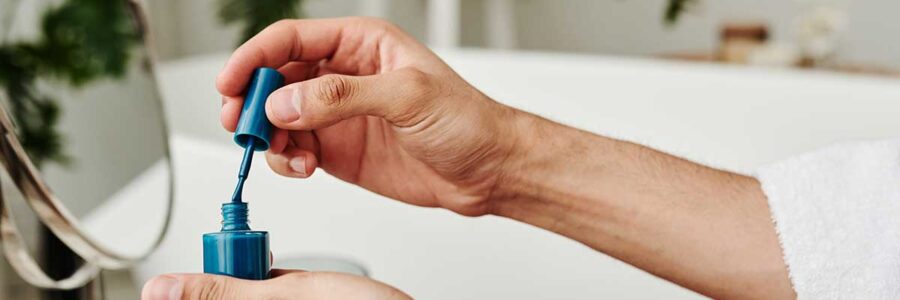Nail polish has long been a staple in beauty routines, but recent research shows that many of these products are anything but safe. Even polishes labeled as “non-toxic” or “17-free” can contain harmful chemicals like triphenyl phosphate (TPHP), raising serious concerns about their impact on health.
The Problem with “Non-Toxic” Labels
Many nail polishes claim to be free from harmful chemicals like formaldehyde and toluene, but these labels don’t account for other dangerous ingredients. One study found that using nail polish caused a measurable spike in TPHP levels in the body. Alarmingly, some brands claiming to be TPHP-free had even higher levels than those not making such claims.[1]
Health Risks Linked to Nail Polish Chemicals
The chemicals in nail polish are absorbed through the nails and skin, where they can enter the bloodstream. Over time, this exposure can lead to:
- Endocrine Disruption: Chemicals like TPHP interfere with hormone signaling, affecting metabolism and reproductive health.[2]
- Developmental Issues: Children exposed to endocrine-disrupting chemicals may experience growth and cognitive delays.[3]
- Cumulative Toxicity: Repeated exposure to multiple chemicals increases the body’s toxic burden, contributing to chronic health issues.[4]
The Need for Ingredient Transparency
The beauty industry often hides behind buzzwords like “non-toxic” without providing full ingredient transparency. This makes it difficult for consumers to make informed decisions. A shift toward greater accountability is needed to protect public health.
A Natural Alternative for Nail Care
Natural buff and wax kits provide a safe, chemical-free way to enhance the appearance of nails. These kits focus on improving nail health without exposing users to synthetic ingredients. Benefits include:
- Chemical-free nail care for all ages.
- Stronger, shinier, and healthier nails over time.
- A cost-effective alternative to conventional nail products.
Conclusion: Rethinking Beauty for Better Health
Nail polish may seem harmless, but the hidden dangers of toxic ingredients reveal the need for caution. By switching to safer alternatives and demanding brand transparency, you can prioritize your health and reduce exposure to harmful chemicals. Beauty doesn’t have to come at the cost of well-being.
References:
- Mendelsohn, Emma, et al. “Nail Polish as a Source of Exposure to Triphenyl Phosphate.” Environment International, vol. 86, Oct. 2015, p. 45. pmc.
- Schug, Thaddeus T., et al. “Endocrine Disrupting Chemicals and Disease Susceptibility.” The Journal of Steroid Biochemistry and Molecular Biology, vol. 127, no. 3–5, Nov. 2011, pp. 204–15.
- Heindel, Jerrold J., et al. “Obesity II: Establishing Causal Links between Chemical Exposures and Obesity.” Biochemical Pharmacology, vol. 199, May 2022, p. 115015.
- Patisaul, Heather B., and Heather B. Adewale. “Long-Term Effects of Environmental Endocrine Disruptors on Reproductive Physiology and Behavior.” Frontiers in Behavioral Neuroscience, vol. 3, June 2009, p. 10.
- Young, Anna S., et al. “Phthalate and Organophosphate Plasticizers in Nail Polish: Evaluation of Labels and Ingredients.” Environmental Science & Technology, vol. 52, no. 21, Nov. 2018, pp. 12841–50.


